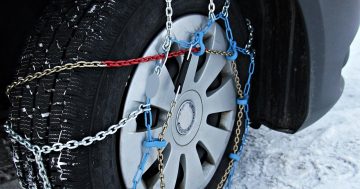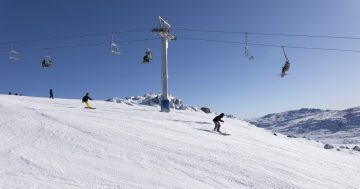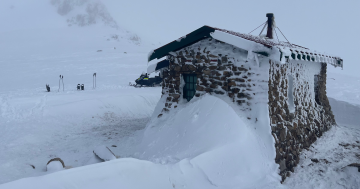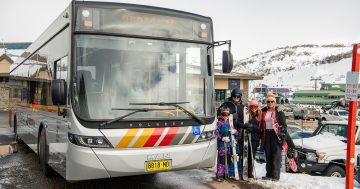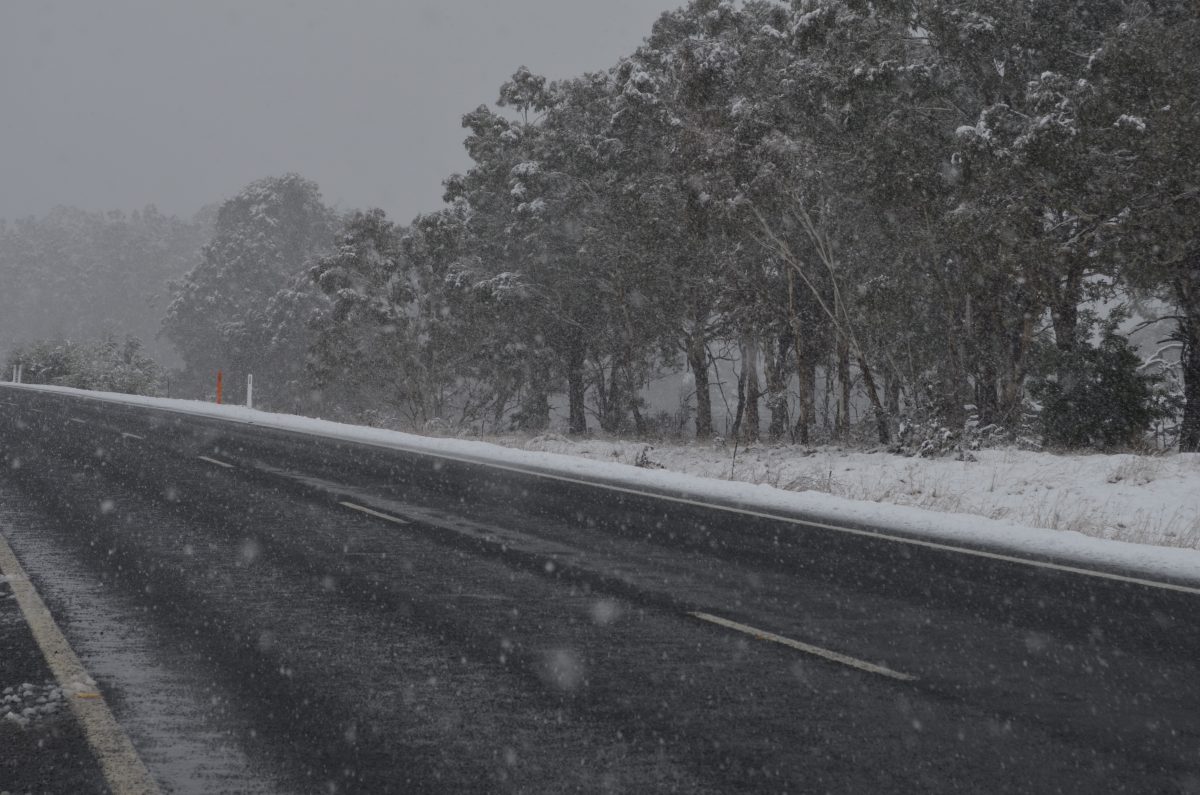
Visitors to the Snowy Mountains ski resorts are urged to drive safely and observe alpine conditions. Photo: Gail Eastaway.
As winter continues and the chance of snowfalls in the Snowy Mountains remains constant, motorists are advised to be prepared for alpine conditions and take care driving in the snow.
Knowing how to drive on winding mountain roads, in snow and icy conditions, is an important skill to acquire.
Snow Safety Inc, Australian Ski Patrol Association, and the Australian Ski Areas Association have worked together to produce an alpine safety guide to make it easier for people to visit and enjoy alpine areas.
Travelling on alpine roads in winter can be dangerous unless special driving techniques are used. Even where snow has been cleared from the road, the surface may still be covered by a film of snow or ice.
Snow-driving basics:
There are basic rules to follow when driving in snow conditions. Like skiing or boarding, driving in snow and icy conditions is an acquired skill. Extreme care is required. Planning is essential to ensure your car is in good condition and you have the necessary equipment for a safe journey.
- Observe local speed limits in resorts, chain-fitting bays and elsewhere
- Before leaving the ski fields, be sure to clear any snow from the car roof to avoid creating a road hazard to other vehicles. Failure to do so is an offence
- Drive cautiously, with gradual pressure on the accelerator to avoid wheel spin. The slowest speed is not always best. Sometimes a slightly higher speed can help you maintain momentum through snow drifts or travelling up hills
- Avoid unnecessary gear changes. Engage first or second gear on level ground (including in an automatic vehicle) before ascending or descending hills in snow or ice conditions
- Brake gently. Front and rear wheels can lock easily, causing a loss of steering and control
- Keep well behind the vehicles in front
- Avoid braking going around corners. Brake before the corner while the wheels are straight
- Keep well away from snow-clearing machines. It is often necessary to reverse these machines, and snow-clearing operators may not be able to see you in a snowdrift or when it is snowing. The fountain of snow coming from the blower may also contain ice chunks and stones
- Do not overtake snow-clearing machines until they have stopped blowing snow
- Be patient approaching large vehicles, such as buses, and only overtake if the visibility is good.
Other helpful hints:
- Clear all glass and mirrors of ice before attempting to drive away from snowfields.
- For fast demisting of the front windscreen, use the car’s heater and fan in conjunction with the vehicle’s air conditioner.
- Warm the engine for a few minutes before driving off.
- Have a spare set of keys.
Driving on alpine roads requires not only concentration and adept skills, but also a lot of patience. Keep your cool if stuck in a long queue of traffic, and always follow the directions given to you by resort staff and road signs. They are there to ensure your safety.
Poor visibility:
If low-visibility (or white-out) conditions occur and the road ahead and snow poles are not visible, bring your vehicle to a stop, leave the motor running and switch on your hazard lights.
Travel in daylight hours whenever possible. It is difficult to judge distances in the snow at night.
If the visibility is poor, drive with your headlights on low beam. Use front and rear demisters, with air conditioning on, to ensure windscreens are clear at all times.
Remember that when meeting oncoming vehicles, common sense dictates that the vehicle going up has right of way. It is much harder for an ascending vehicle to start again if it has to stop.
Braking and skidding:
On icy or snow-covered roads, always use your brakes gently and drive slowly. If you lose traction, it is better to control your car by steering rather than braking. If you are to hit a snow bank or get stuck in a snow drift, it is better than going over the edge! Keep some distance from vehicles in front of you and give yourself plenty of time to stop.
Chain-fitting:
Fit chains at bays where you see the ”Fit Chains Here” sign. For two-wheel-drive vehicles, always fit chains to the driving wheels only. When required, chains should be fitted as specified by the vehicle manufacturer. On four-wheel drives, the chain location is usually determined by the vehicle’s power distribution. If your four-wheel drive is front-wheel drive, chains should be fitted to the front two wheels, whereas if it is rear-wheel drive, chains should be fitted to the back two wheels.
At all alpine resorts, you can be fined for not carrying and fitting chains as directed.
Chain-fitting bays are level and make fitting easier. If you don’t use the chain-fitting bay, you may find yourself in trouble. Chains are hard to fit on slopes, and you will obstruct other vehicles and snow-clearing equipment.
If it has not been necessary to fit chains when travelling to the resort, it is advisable to fit them upon arrival in preparation for the return trip. It is difficult to fit them to cars covered by snow.
Do not drive faster than 40 km/h once chains have been fitted.
Contact your local ski patrol or phone triple zero for fire, ambulance or police emergencies.
See the full driving guide at snowsafe.org.au.






